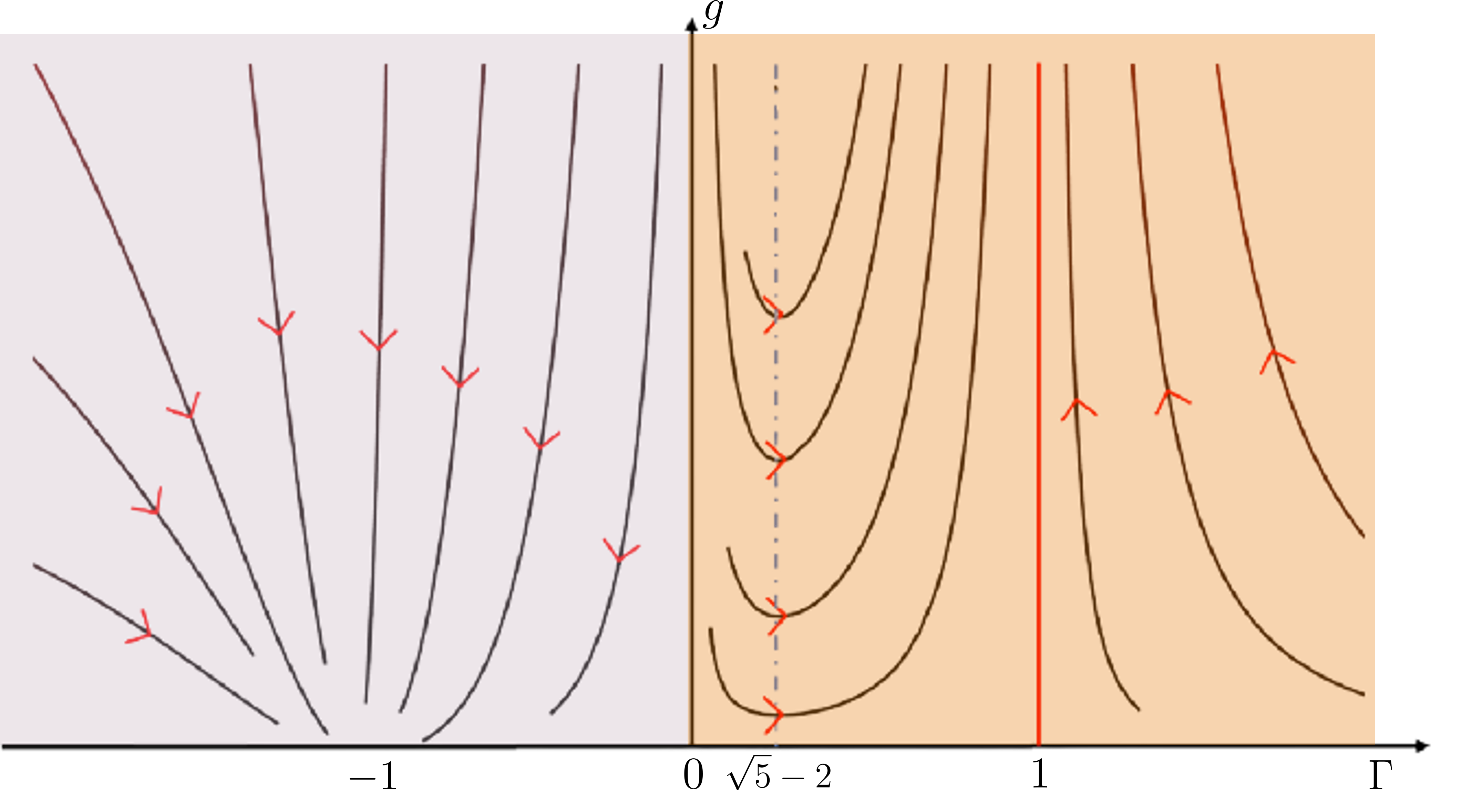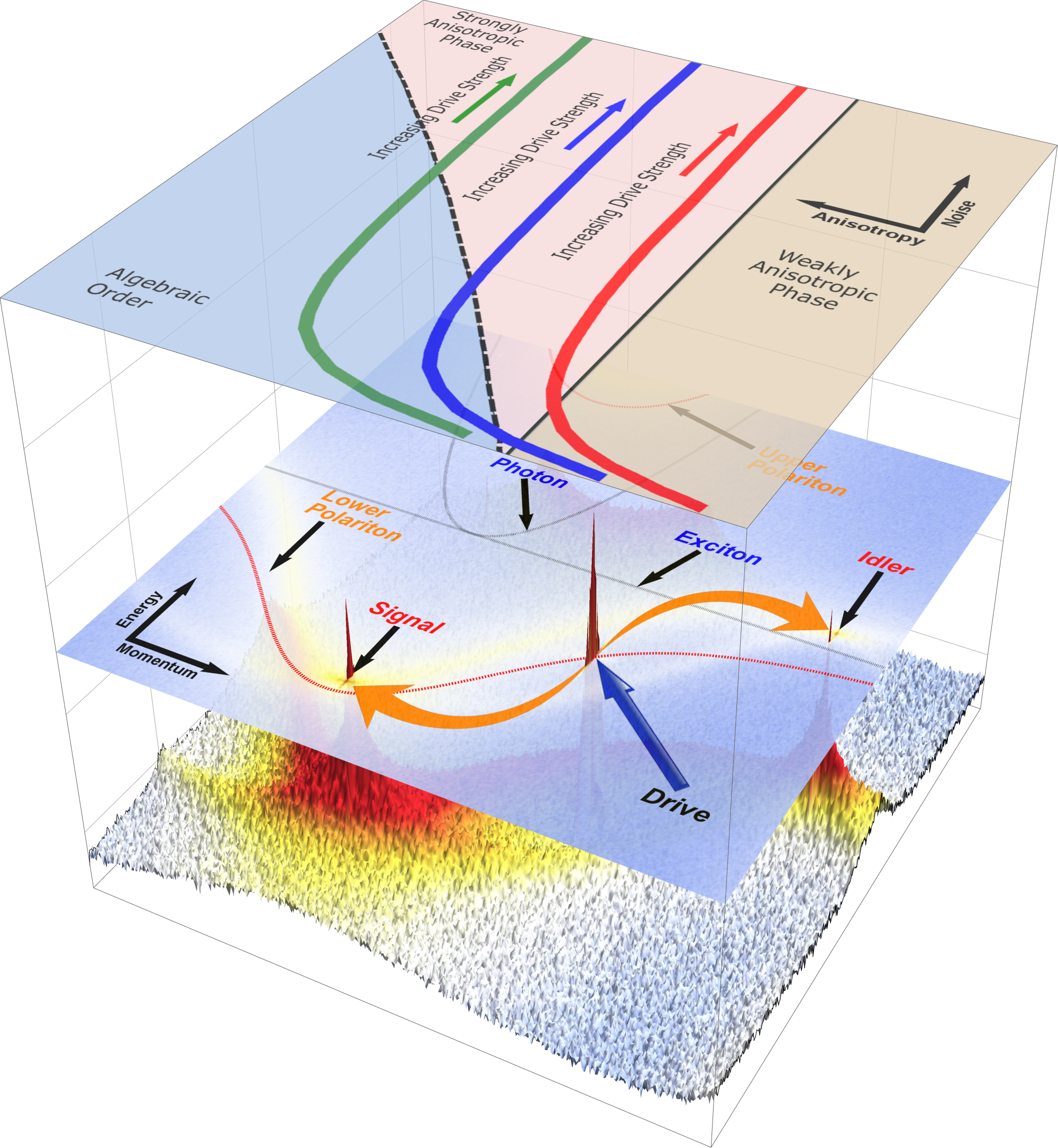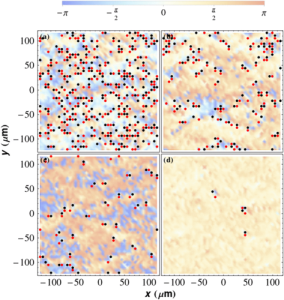The concept of universality classifies different physical systems in terms of common collective behaviour in the long-wavelength limit. This is motivated by the concept that the long-wavelength dynamics are agnostic to microscopic details and instead only depend a few relevant terms. The set of systems that present the same effective long-range dynamics define a Universality Class. While universality and dynamical critical phenomena in equilibrium are now considered well-understood, the extension to non-equilibrium is a relatively new and evolving field of study.

Unprecedented advancements in experimental techniques in light-matter systems, particularly in microcavity-polariton systems, have stimulated interest in the collective behaviour of driven-dissipative quantum systems. In these systems, conservation of energy is not observed, the detailed balance condition is broken and fluctuation-dissipation relations are not satisfied. Notably, in two dimensional systems it has been shown that the driven-dissipative nature of the system has a more profound qualitative effect, completely destroying the analogous equilibrium order in some regimes, bringing the system to a different, genuinely non-equilibrium, universality class, the Kardar-Parisi-Zhang (KPZ) class.
Kardar-Parisi-Zhang Universality
The Kardar-Parisi-Zhang (KPZ) equation gives rise to a universality class which emerges in a wide range of non-equilibrium systems, from growing bacterial colonies to burning paper. Coherently pumped microcavity polaritons in the optical parametric oscillator regime also represent a paradigmatical example of a system which demonstrates a genuine non-equilibrium universality class. In fact, this system can be driven to different universalities simply by changing the strength of the pumping mechanism in an appropriate parameter range.

Thus the system can be driven between (i) the classic algebraically ordered superfluid below the BKT transition, as in equilibrium which corresponds to the Edwards-Wilkinson fixed point; (ii) the non-equilibrium KPZ phase; and the two associated topological defect dominated disordered phases caused by proliferation of (iii) entropic BKT vortex-antivortex pairs or (iv) repelling vortices in the KPZ. While some of these transitions can be observed in current experimental setups, there are instances where, at the length scales typical of experiments, distinguishing between the KPZ phase and an equilibrium-like algebraically ordered phase becomes challenging.
- Tuning across Universalities with a Driven Open Condensate
A. Zamora, L. M. Sieberer, K. Dunnett, S. Diehl, and M. H. Szymańska
Phys. Rev. X (2017) - Vortex dynamics in a compact Kardar-Parisi-Zhang system
A. Zamora, N. Lad, and M. H. Szymanska
Phys. Rev. Lett. 125, 265701 (2020) - Searching for the Kardar-Parisi-Zhang phase in microcavity polaritons
A. Ferrier, A. Zamora, G. Dagvadorj, and M.H. Szymańska
Phys. Rev. B 105, 205301 (2022)
Coherence in a 2D Polariton Condensate

Numerical simulations and experiments have revealed striking similarities between the transition from a disordered to a quasi-ordered phase of 2D driven-dissipative systems (such as microcavity polaritons) and the Berezinskii-Kosterlitz-Thouless (BKT) transition observed in 2D equilibrium systems. Analagous to the equilibrium BKT mechanism, the quasi-ordered phase is attained through the binding of vortex-antivortex pairs. Free vortices destroy order leading to an exponential decay in the first order spatial correlations. Conversely, the bound vortex-antivortex pairs do not affect the order at long range, thus giving rise to algebraic decay.
- Power-law decay of the spatial correlation function in exciton-polariton condensates G. Roumpos, M. Lohse, W. H. Nitsche, J. Keeling, M. H. Szymańska, P. B. Littlewood, A. Löffler, S. Höfling, L. Worschech, A. Forchel, and Y. Yamamoto PNAS (2012)
- Nonequilibrium Phase Transition in a Two-Dimensional Driven Open Quantum System
G. Dagvadorj, J. M. Fellows, S. Matyjaśkiewicz, F. M. Marchetti, I. Carusotto, and M. H. Szymańska
Phys. Rev. X (2015)
Phase Ordering
Microcavity-polariton systems give rise to universal properties in their dynamics when the system transitions from the highly disordered phase (absence of polariton condensate) to the quasi-ordered phase (presence of polariton condensate) by an infinitely rapid quench of one of the driving parameters. Remarkably, despite their driven-dissipative nature, both the incoherently and coherently pumped systems fulfil the dynamical scaling hypothesis, exhibiting self-similar patterns in the two-point correlators at late times of the phase ordering. Numerical simulations of the polariton system under both pumping schemes show that, for polaritons, this phase ordering process is characterised by the dynamical critical exponent z≈2, suggestive of the equilibrium-like XY (BKT) universality. Crucially, the dynamics are significantly influenced by topological defects, which introduce logarithmic corrections to both the power-law decay of the vortex count and the corresponding growth of the characteristic length-scale. These defects play a fundamental role in shaping the system’s behavior during the phase ordering process.
- Dynamical critical exponents in driven-dissipative quantum systems
P. Comaron, G. Dagvadorj, A. Zamora, I. Carusotto, N.P Proukakis and M. H. Szymańska
ArXiv 1708.09199
Go back to Quantum Fluids of Light

